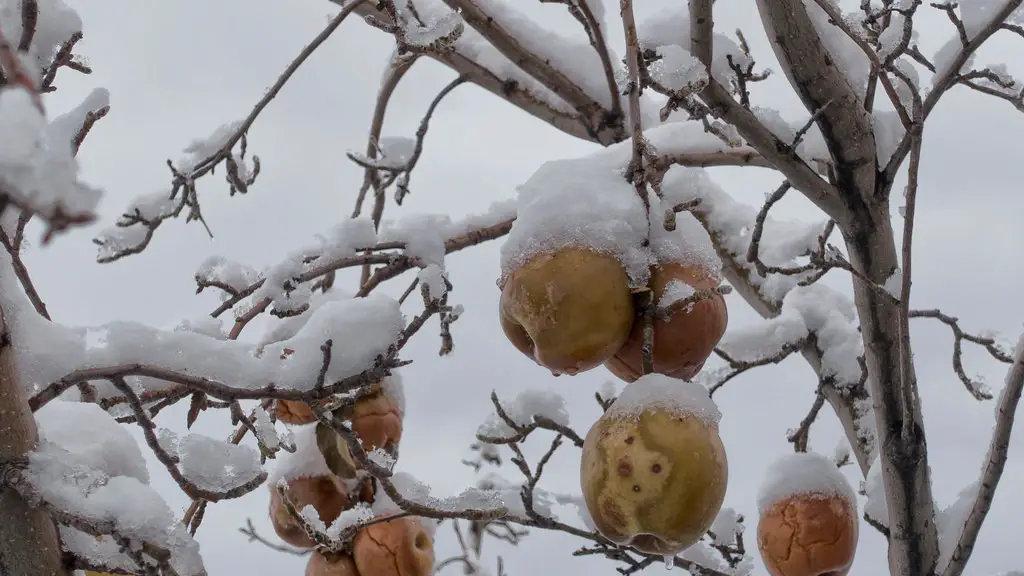When Lemon Tree Leaves Turn Yellow: The sight of yellowing lemon tree leaves can be a cause for concern for gardeners. This discoloring of a lemon tree’s leaves may be indicative of a wide range of potential issues, including nutrient deficiencies and pest infestations. Examining the health of a plant’s soil, roots, stem, and leaves allows gardeners to identify the problem and take steps to restore the plant to health. In some cases, this may involve adding fertilizer or organic matter to the soil, controlling pests, or pruning away damaged leaves and branches.
Shrivelling
Shrivelling of lemon tree leaves can occur as a result of there not being enough water available in the soil. Signs of wilting and leaf discoloration often appear before any yellowing is noticed. Tugging on the stems and leaves of the plant is often enough to tell whether it’s lacking water. To prevent the leaves from shrivelling, gardeners will need to increase the frequency of irrigation or add more organic matter to the soil, if it’s too sandy. Mulching the root area of the tree can also help reduce the evaporation of moisture from the soil.
Nutrient Deficiencies
Some yellowing between the veins of a lemon tree’s leaves can be indicative of a nutritional deficiency in the soil. This might be in the form of nitrogen, potassium, or magnesium. Gardeners can use a soil test or a similar method to identify deficiencies, then add the appropriate fertilizer to the soil or spray the leaves of the tree with a solution of the deficient nutrient. It can also help to add compost to the base of the tree to reduce the need for fertilizer.
Pest Infestations
Certain pests such as caterpillars, scale, and aphids can lead to yellowing of a lemon tree’s leaves. These pests, when enough of them are present, can steal away valuable nutrients from the soil and sap the energy away from the tree, resulting in yellowing leaves. Pest infestations must be treated in a timely manner in order to stop the yellowing and prevent further damage to the plant. Activating beneficial predators, such as lacewings and ladybugs, through habitat restoration can also be effective in controlling pest numbers.
Inadequate Light
Inadequate light can be another cause of yellowing leaves on a lemon tree. Lemon trees require a good amount of sunlight for optimal growth, but a lack of it can lead to the yellowing of leaves. Gardeners may need to move the tree to a sunnier location or rotate its position throughout the day to ensure that it gets enough light. Trees that are regularly pruned can also help to spread light lower onto the branches, allowing the upper parts of the tree to get more light.
Lack of Macronutrients
Lemon trees also require sufficient levels of macronutrients for proper health and growth. Common macronutrients include nitrogen, phosphorus, and potassium. Like with other nutrient deficiencies, gardeners can conduct a soil test to identify any macronutrient deficiencies. Applying granular fertilizer or spraying a liquid fertilizer solution containing the deficient nutrient onto the leaves of the tree will help to replenish its levels of macronutrients. Additionally, sprinkling Epsom salt around the base of the tree can help to slow down the yellowing of leaves.
Overwatering or Poor Drainage
Leaves that are yellowing and falling off of a lemon tree may also be symptomatic of either overwatering or poor drainage in the soil. The roots of a lemon tree may become waterlogged, leading to root rot and the yellowing of its leaves. Many times, gardeners can correct this issue by improving soil drainage, installing a drainage system, adding organic material to the soil, or simply reducing irrigation frequency. In some cases, it may even be necessary to replant the tree in a different spot.
Leaf Scorch
Leaf scorch is a common issue among lemon trees and can cause yellowing of their leaves. This condition is caused by an excessive amount of sunlight or wind. Altering the amount of sunlight that the tree receives by trimming back some of the branches or providing some form of shade will help to stop the yellowing from occurring. Gardeners should also avoid subjecting the leaves of their tree to sudden temperature shifts, or positioning the tree near a source of wind.

